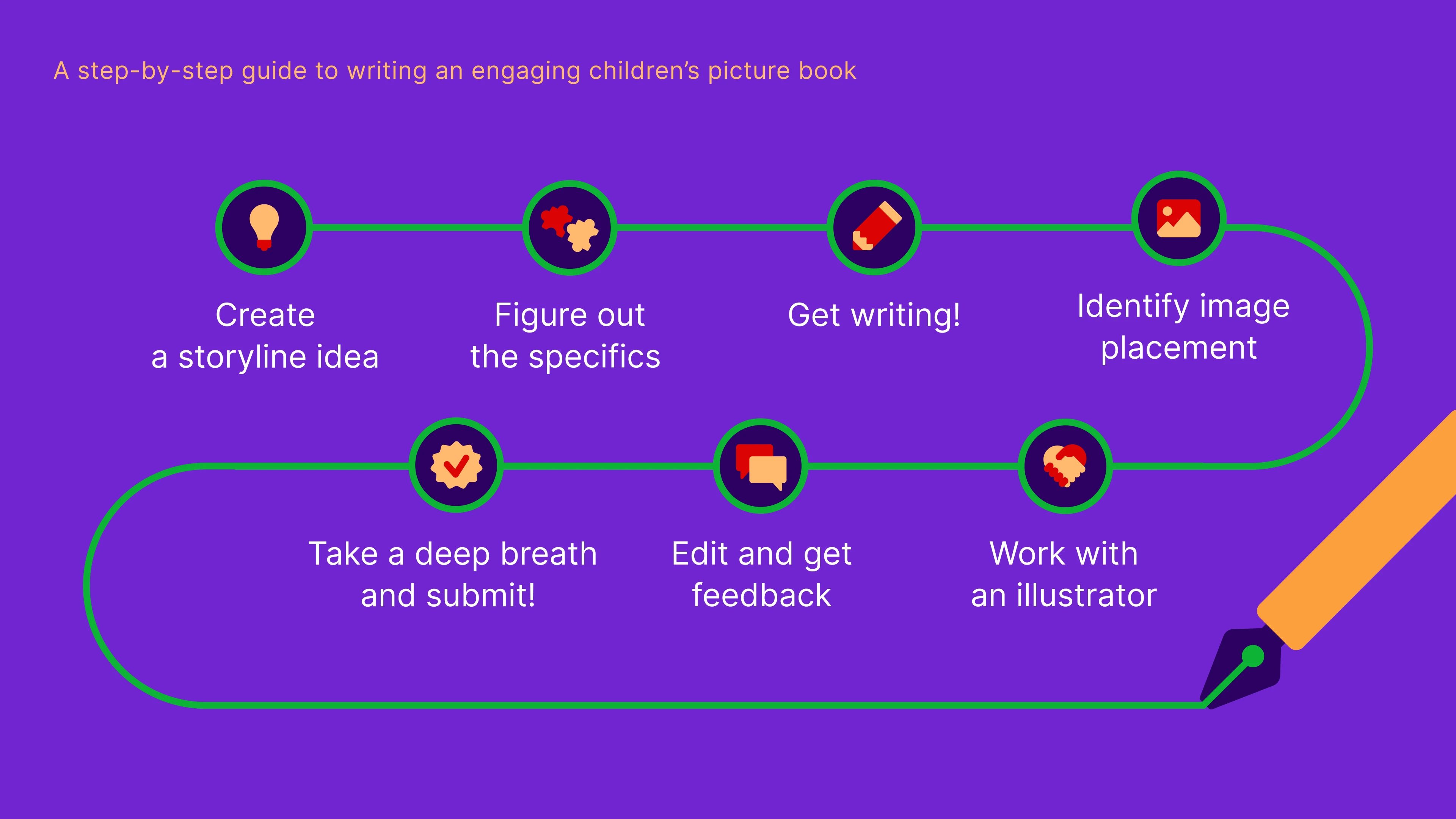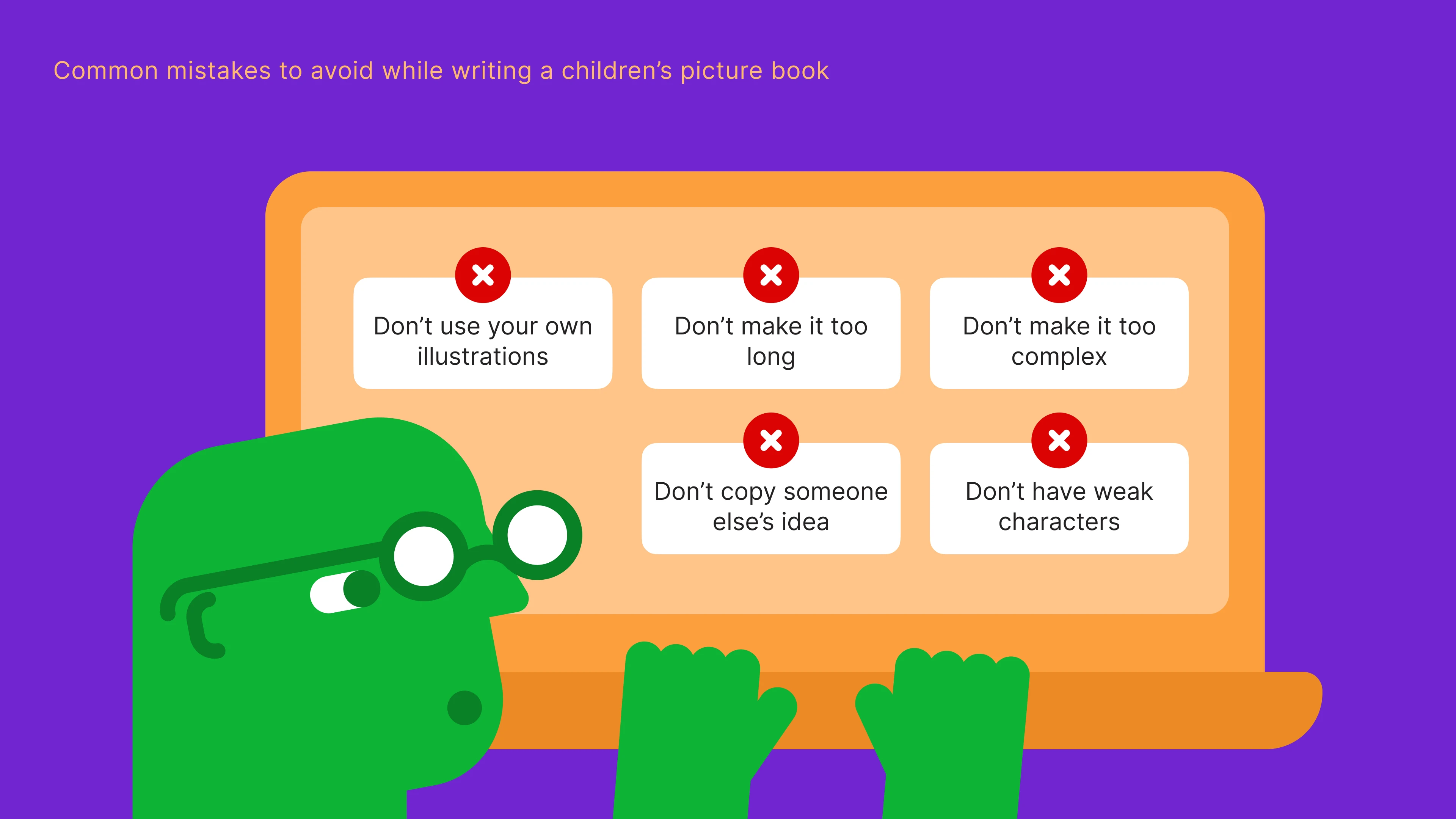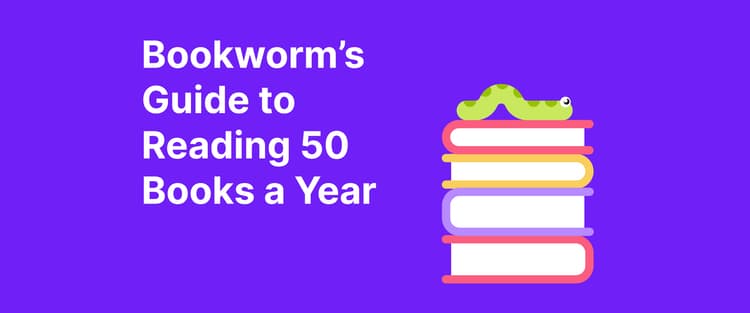A book is never just a book. There are many different genres, styles, and approaches that cater to various audiences. To grab attention, hold it, and achieve your aims, you need to know who you’re targeting. Then, you must know what you want to say, how you want to say it and deliver it in the right way. It sounds tricky, right? Well, not necessarily. You can learn how to write a children’s picture book without feeling stressed.
When speaking to young children, the visual approach is your best bet. That’s where picture books come in. But are picture books easy to create? Surely they’re just images?
The truth is, that creating a children's book is sometimes more difficult than creating a book for an adult. We’re talking about a specific level of understanding, and we all know children have short attention spans! But don’t worry. In this guide, we’ll discuss how to create a great children's picture book, taking you through the process step-by-step. We’ll even borrow a little help from Stephen King and his book On Writing.
What is a picture book?

First things first, what is a picture book?
Picture books are intended for early readers, usually between 4 and 8 years of age. The idea is that you’re still telling a story, but you’re using regular images to make it easier for the child to understand. These are still chapter books, but they use a more simplistic approach.
As a picture book author, your images captivate their imagination and hold their attention easier. It allows them to develop a love for reading. We’re talking about simple and concise language, making it easy for children to read themselves or their parents to read to them.
A children’s picture book isn’t long; it’s between a 500-1000 word count maximum and has many images throughout. But don’t worry, you don’t need to illustrate a children’s book as well as write it. You can easily work with a book illustrator while focusing on the words, story idea, and image placement. In essence, the pictures add extra understanding to the words, not the other way around.
What’s the difference between board books and picture books?
Board books and picture books are both popular for children, so it’s no wonder they’re easily confused. Let’s break it down.
Both types of books go heavily on image count but focus on different age groups and stages of development. Board books are for younger children, usually toddlers. The pages are made of cardboard because, at that age, children like to put everything in their mouths. They’re durable and very easy to understand. Put simply, board books are usually the first type of books a child will ever see, and the word choice is very simplistic.
Picture books are the next level. They’re aimed at children up to around eight and up to middle grade. These books are longer, have more words, and they’re made of paper. Stories are a little more complex, and many introduce children to important societal issues, such as diversity.
We know about word count, but as far as pages go, how many should there be? Generally, children’s picture books are around 32 pages maximum. From that, you should focus on around 24 pages for the story and the rest of the illustrations. That way, you get a nice balance.
Either way, both board books and picture books help children use their imagination and shape how they see the world around them. In the bestselling book, ‘Unleash the Power of Storytelling,’ Rob Biesenbach rightly mentions that we hear stories from birth to adulthood, and they become a crucial part of our consciousness. These books help children get started early; they give them a sneak peek into the amazing things to come and pique their interest in different subjects — even if they’re not aware of it yet!
A step-by-step guide to writing an engaging children’s picture book

Writing a children’s picture book differs significantly from creating a regular novel. Let’s take you through a step-by-step guide. In the end, you’ll know everything you need to know about creating the very best picture books for children, and you can start your own writing journey.
Step 1: What’s your storyline idea? Questions you must ask yourself
The first step toward writing a popular children’s storybook is to develop an idea and create a template. But it can’t just be any idea; it has to be something that children can relate to, which will help them learn something. Most children’s books rotate around similar concepts, such as overcoming adversity, friendship, sharing, fear, and attachment. Even in stories about teddy bears, talking toys, and aliens, you’ll find a deeper lesson.
Matthew Salesses demonstrates this idea well in ‘Craft in the Real World.’ There, he mentions that even if you’re writing about an imaginary fantasy world, you should create a context that links with reality.
“Even if that world looks almost the same as ours, it will always be a representation, not a universal. If there is a distance tone inhabits, it is the distance between our world and the world of the story.”
Once you’ve come up with an idea, you need to ask yourself whether your idea will appeal to parents as much as children. Remember, young adults and parents often read these stories to children. You could even ask yourself about the stories you remember from your childhood: what made them stick in your mind?
Step 2: Figure out the specifics
How many pages are you aiming toward? How many pictures are you going to add? Do you have any specific ideas for illustrations, or do you want to leave that up to a professional illustrator?
These questions will help you create a rough guide, and from there, you can use it as a foundation for the next step — creating your first draft.
Scribble down the rough story you want to tell. At this point, you don’t need character specifics or too much detail. In many ways, digging too deep could stifle your writing creativity. You just need a general guide.
Step 3: Get writing!
This is where the fun starts!
In his book, ‘On Writing,’ Stephen King mentions that writing is a little like ballet; it requires a lot of dedication and plenty of self-discipline. He also believes you should write in a place that you feel inspiring, somewhere comfortable that allows you to really zone in on the story. It could be your garden, the beach, a local park, or your living room. It’s a personal choice that will be different for everyone.
King also reassures us that you’ll never get it right the first time. Practice truly does make perfect, so don’t be discouraged if the words don’t come to you immediately. Stick with it and just get started.
“You can, you should, and if you're brave enough to start, you will.”
There are a few strategies that fit with picture books in particular. Let’s delve into them.
Simple vocabulary
This one might be a no-brainer, but as an adult writing for a child, it’s important to constantly ask yourself if a child would understand your words. Stephen King tells us that the best words are the simple ones. Additionally, Matthew Salesses also reiterates this point. He reminds us that it’s much easier to say words like “asked” than “queried.” Simple is the way forward.
Point of view
There is no right or wrong choice here, but make sure it’s consistent. If you choose the first person, you’ll use “I” or “me.” This is a good option as it’s easy for the child to understand, but it might not fit with every story. So, you could opt for the second person and use “you.”
The other option is to speak from the narrator’s perspective, using “he,” “she,” or “they.”
Show, don’t tell
In this book, ‘Unleash the Power of Storytelling,’ Rob Biesenbach introduces an intriguing idea, one that works really well with children’s picture books. Whenever you’re introducing an idea, such as sharing or apologizing, make sure you back your words up with an example and use your own experience by asking yourself questions.
“What did you want to be when you were growing up? What does your child think you do? What’s the best lesson you learned from a parent, friend, or mentor? How did you get started? What do you love about your job? How does what you do make a difference to others? What frustrates you? What makes you proud? Who are your heroes and why?”
You can easily back up your words with an illustration and focus on the emotions on the character’s face, along with their body language. This concept makes it much easier for the child to understand and also makes it more ‘real’ to them.

“What did you want to be when you were growing up? What does your child think you do? What’s the best lesson you learned from a parent, friend, or mentor? How did you get started? What do you love about your job? How does what you do make a difference to others? What frustrates you? What makes you proud? Who are your heroes and why?”
Six keys to a strong story
Biesenbach also goes on to give us more advice on how to create the best story possible. It should:
Feature emotions
Have a main character children can connect with
Show the child that it’s okay to be flawed and human
Distract the child and show them the wider world
Repetition & rhyming
Children learn by repetition. It’s the simplest and easiest way to present new ideas and help them absorb them quickly. So, when you’re learning how to write a children’s book, make sure you repeat words and ideas regularly.
As for rhyming, not only does it make the content more fun for children, but it helps them guess the next part of the story. A good example of how to use rhyming in children’s books is Dr. Seuss. Remember him?
Step 4: Identify image placement
Now you’ve written your children’s picture book, you need to identify the best places to place your illustrations. You might have had an idea before you started writing the picture book, but it’s likely to change as the words take shape.
Working out your image placement then makes it easier to work with an illustrator and put your final book together before self-publishing.
Step 5: Work with an illustrator
It’s a good idea to know the type of images you want in your book before reaching out to illustrators. When you’re ready, look on freelancing sites, social media, and websites to shortlist high-quality people. Reach out to them, and don’t be afraid to ask questions. It’s vitally important they can create images for your target audience, so you can ask for samples before choosing them for your children’s book.
Step 6: Editing & feedback

No book writer likes to hear negative feedback, but it’s a vital part of learning how to write a children’s book. It’s a good idea to choose a focus group of peers, parents, and children alike. That way, you’ll get a range of varied opinions to help you move forward. Picture books are relatively easy to give feedback on, so you shouldn’t wait too long.
Take into account all comments and identify what changes you can make based on this feedback. Don’t take it personally; see it as a learning opportunity.
Step 7 - Take a deep breath and submit!
Self-publishing on Amazon and other sites is the easiest way to get your book out there. Traditional publishing is a longer route and usually comes with a few rejections before a “yes.” However, if you self-publish, you’ll need to market your first children’s book alone. It’s not impossible, but it is time-consuming.
Amazon makes it easy to upload your book to their site, and once approved, it will go live for sale. However, if you choose traditional publishing, you’ll need to send samples of your work to publishers and wait. It really depends on whether you are patient or not!
How to write characters that kids love
When writing children’s books, you need to create characters that children connect with and adore. It’s the single best way to keep their attention where you want it. You might think it would be difficult to create engaging characters in picture books, but it’s vital that your characters are realistic. They should feel real, and children should be able to see a little of themselves in the characters.
Think about the Hungry Caterpillar or Paddington Bear. These stories were told mainly through illustrations, but we all loved those characters growing up. They were a little different, quirky even, and we connected with them because they made us love them.
So, your characters should:
Be relatable
Teach a lesson - For instance, the Winnie the Pooh characters
Be likable
Make mistakes sometimes - That way, children can learn from them
Whether you have a “good” character and a “bad” character or just stick with one main individual is up to you. Just make sure that either way, the main character is someone who has a lot of redeeming qualities.
Common mistakes to avoid

Now you know how to start writing a children’s picture book, it’s essential to know the things you shouldn’t do. You might think it’s difficult to go wrong when a book is mostly pictures, but it’s surprisingly easy! The most important thing is to take your time but also make sure you avoid these common pitfalls:
Don’t use your own illustrations - Unless you’re a professional, it’s best to find an illustrator to do this for you. Remember, you’re a children’s book author - you don’t have to do it all yourself.
Don’t make it too long - Remember, children’s attention spans are short!
Don’t make it too complex - Focus on the age range and avoid anything too heavy.
Don’t copy someone else’s idea - It’s all been done before. Come up with book ideas that are new and unique.
Don’t have weak characters - You want children to connect with your characters, so focus on what makes them distinctive and unique.
Conclusion
Writing picture books for young readers can be a complex task, but think about the benefit those children will get from reading your work. The book market is competitive, but if your book has beautiful illustrations, a strong story, and relatable characters, you stand a great chance of getting noticed.
The Headway app is a great place to look for more writing tips before you move toward self-publishing. You can read a summary of Stephen King’s best-selling book, ‘On Writing,’ gleaning advice from this legendary author. ‘Craft in the Real World’ by Matthew Salesses teaches us that writing is an art form and gives plenty of actionable tips on getting started.
Alternatively, ‘Unleash the Power of Storytelling’ by Rob Biesenbach is a great read for budding creative writers of children’s stories. All of these summaries will help you enhance your writing skills and take a giant leap toward your dream of being a children’s author.
So, aspiring authors, download the Headway app today and learn all there is to know about becoming a bestselling writer. You never know, your very own bestseller could be on the horizon.







